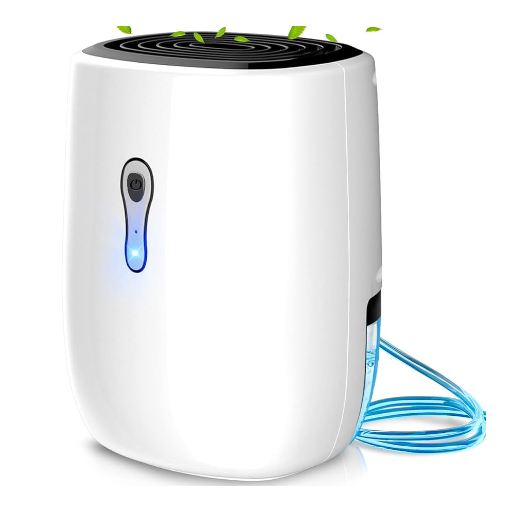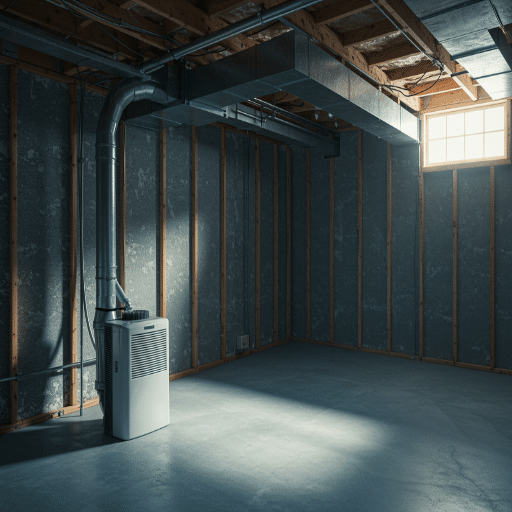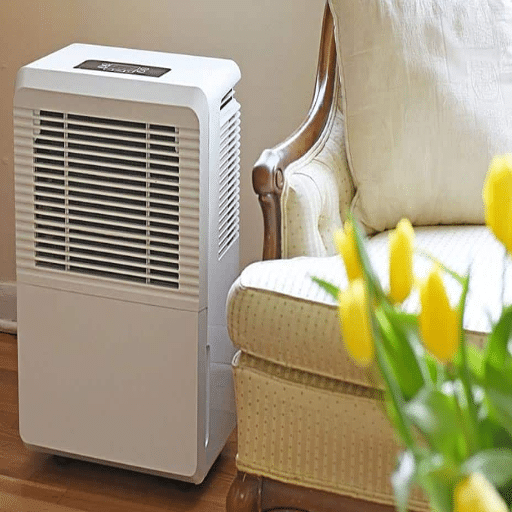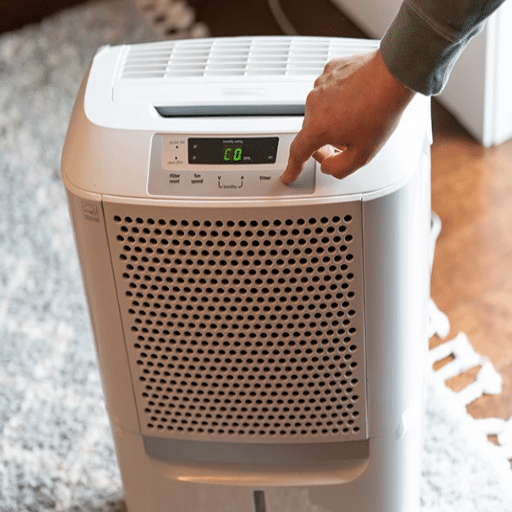Bathrooms are particularly prone to excess humidity, which can lead to persistent mold growth, unpleasant odors, and even structural damage over time. One of the most effective ways to combat these issues and maintain a fresh, healthy environment is by using a reliable mini dehumidifier. But with so many models on the market, finding the best option for your bathroom can be overwhelming. This article will guide you through the benefits of using a mini dehumidifier in your bathroom, discuss key features to look for, and help you choose the perfect product to improve air quality and prevent mold, all while fitting seamlessly into your space.
Importance of Dehumidifiers in Bathrooms
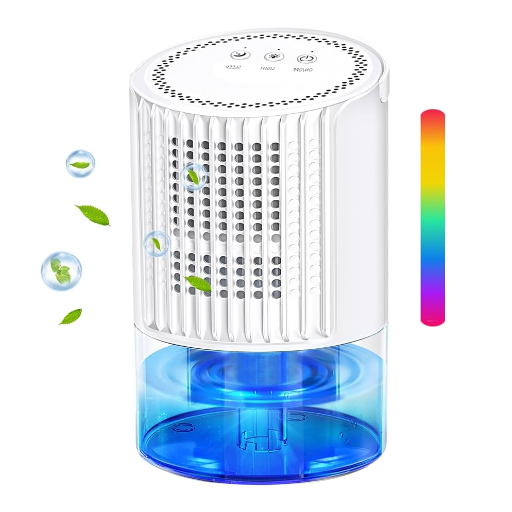
Reducing Moisture and Humidity
Bathrooms, in general, are highly moist and humid environments; this is mostly attributed to water-based activities like showering and bathing. Left unchecked, high humidity may promote the unchecked development of mold, mildew, and bacteria which dulls air quality and may affect one’s overall health. A mini dehumidifier ensures that moisture levels are kept low by removing excess water vapor in the air, keeping it at an optimum humidity level of 30-50%.
The use of a dehumidifier in your bathroom will also do wonders in protecting various structural elements, including walls, ceilings, and fixtures. Prolonged humidity exposure paints surfaces with the picture of peeling, warped wood, and corrosion of metals. Taking control of these moisture levels by use of a dehumidifier will, therefore, help lengthen the lifespan of these materials, thereby reducing maintenance costs and retaining the visual appeal and functionality of your bathroom.
To get more performance, your mini dehumidifier should be placed centrally within the bathroom, ideally close to the shower or bathtub. There should be good air circulation around the unit, and the model should provide ample water extraction for your bathroom size. The more regularly you clean and maintain your dehumidifier, the better its performance is and the results you have in getting rid of moisture and humidity.
Preventing Mold and Mildew Growth
Since mold and mildew grow in damp environments, controlling moisture is the main prevention. Minimize the attack of mold by proper ventilation: Use an exhaust fan during or after showering. For areas where possible, keep the windows open, allowing air to flow and keep humidity down. For windowless bathrooms, a good-quality ventilation system would be a must. Do check for any leaks occurring within the plumbing, fixtures, and such regularly, as such leaks tend to collect excess moisture over time.
Keeping things clean would prove the second most important factor. Clean grout, tiles, and other surfaces regularly with a mold-resistant cleaning product. Focus especially on places that tend to hold water, such as under-the-sink areas, behind toilets, and along shower seams. The use of mildew-resistant seals and caulking further cuts down on spore entry into crevices. And, of course, washable or mold-resistant shower curtains and bath mats are also good choices in limiting the potential for mold growth.
Lastly, keep track of the humidity levels, and always work on lowering them using a hygrometer and a reliable dehumidifier. Set the relative humidity below 50%, so mold doesn’t stand a chance of growing. When mold problems persist, professional intervention and in-depth treatment should be sought to ensure that fixations are not only efficient but also done safely. Together, that array of mud guards makes for a thorough mold-and-mildew-prevention strategy for any bathroom.
Improving Air Quality
Good indoor air quality is necessary for healthy living and comfort; bad air quality can aggravate respiratory complaints and allergies. The main thing that should be done to enhance air quality and maintain good air is ventilation. Keep the exhaust fans running, and keep the windows open if weather permits, and air purifiers can help to curb suspended particles like dust, pollen, and animal dander.
Cleaning is another measure that must be kept up. Dusting and vacuuming should be done almost daily, especially in carpeted and upholstered areas, since these surfaces can retain allergens with time. Use a vacuum with a HEPA filter for the best results against smaller particles. Use nontoxic, low-VOC cleaning products as well in order to minimize exposure to harmful chemicals during cleaning.
Keep in mind that it is also very important to control and monitor the level of humidity inside. Mold will like too much moisture, therefore worsening the air quality. Drying can keep it between the range of 30% and 50%, which is said to be ideal. Make it an extra measure by installing indoor air quality monitors to make sure that you will treat any pollutants as soon as possible. This will create a healthy and breathable indoor environment.
Key Factors to Consider When Choosing a Small Dehumidifier
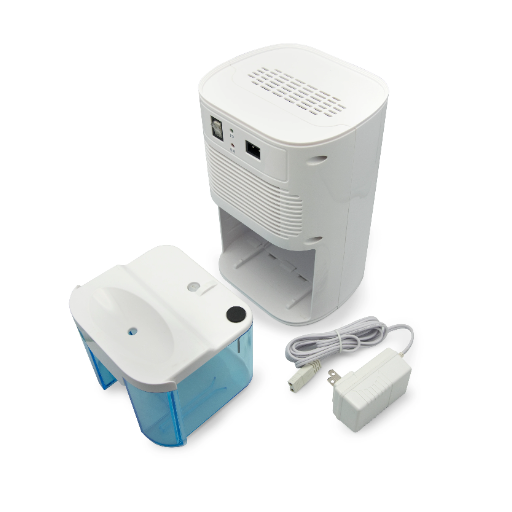
Noise Level
Noise level plays a paramount factor when selecting a small dehumidifier, especially when the unit is meant to be operated in bedrooms, offices, or any other place where silence is a must. Most small dehumidifiers typically make sounds anywhere between 35dB and 50 dB. A room with ambient sound levels of 35dB is similar to that of a quiet library, while a 50dB level sounds like refrigerators humming. Anything under 40 dB would be classified as ideal for noise-sensitive environments, where a few faint sounds may not even be considered a hamper to one’s sleep or work.
Nowadays, noise is being compromised with moisture removal performance for newer equipment dehumidifier design improvements. Some noise-reduction technologies are better fan designs, variable fan speeds, and quiet compressors. For instance, compact dehumidifiers with thermoelectric or Peltier technology are usually quieter than compressor-based models. Thus, a good understanding of the underlying technology and specifications of the unit will help in zeroing in on one that meets one’s capacity and noise requirements.
In essence, the noise-level perception of a machine can also be influenced by dehumidifier placement, as placing units on hard surfaces transmits vibrations, thus amplifying the sound, whereas setting it on a carpeted floor, or even better, on anti-vibration pads, will appreciably lower noise levels. Having taken these into account will ensure that you find a small dehumidifier with which you can live: effective yet quiet.
Energy Efficiency
Energy efficiency is a key consideration when buying a compact dehumidifier, given its effect on running costs and environmental impact. Today’s dehumidifiers come equipped with cutting-edge features like energy-saving compressors and auto-humidity controls to minimize power use when the machines are not really needed. Also, some Energy Star-certified models go further in cutting down energy use while maintaining top performance, thus preferred by users for saving costs as well as environmental considerations.
The measure of energy efficiency usually comes in the form of energy factor (EF) or integrated energy factor (IEF), depending on the specs of the model of the dehumidifier. The two are similar in principle: they measure the volume of moisture removed for each unit of energy consumed. A unit with a higher EF or IEF means it wastes less electrical energy with respect to time. Small dehumidifiers with an Energy Star rating will operate at an IEF of 1.7 liters/kWh or higher, helping to optimize operation and energy consumption.
On top of this, newer technological interventions such as programmable timers and smart home compatibility favor the energy efficiency of compact dehumidifiers. Direct control of timing to correspond to off-peak electricity hours or monitoring of status with adjustment would prevent any wasteful operations. When these synergize with proper maintenance like cleaning filters and coils periodically, they minimize energy waste while prolonging the effective working lifetime of the dehumidifier, which will provide long-term cost-effective, green solutions for operation.
Ease of Use and Maintenance
Today’s dehumidifiers are designed so that user-friendly features are built in. The presence of a digital display enhances the optional manipulation of humidity, timer settings, and running modes. Essentially, it carries on the tradition of convenient transportation by virtue of caster wheels and ergonomic handles for movement from one room to another or even outside.
Maintenance-wise, designs have been crafted by manufacturers to require the least user effort while instrumental in keeping the device at its best performance. Removable or washable air filters are universal features these days, allowing the end-user to maintain air quality and dehumidifier functionality without constantly buying new replacements. In draining, modern designs would typically provide two alternatives: manual draining through easily removable tanks or continuous draining through a hose set-up directed either to a drain or pump system. This gives options depending on different situations from a small apartment to a huge basement.
Moreover, durability and self-diagnosing advanced maintenance capability are major factors in making maintenance easier and less frequent. Many units provide alerts that keep users informed when it is time for the filter to be cleaned, the tank to be emptied, or the coils to be defrosted. A smart system connected to a mobile program can even provide timely diagnostic reports and reminders for maintenance, so the unit always runs efficiently and does not require costly repairs. With these features, combined with proper care, dehumidifiers are guaranteed to provide performance that is consistent with an environmentally and economically friendly form of humidity control.
Comparison of Top-Rated Mini Dehumidifiers for Bathrooms
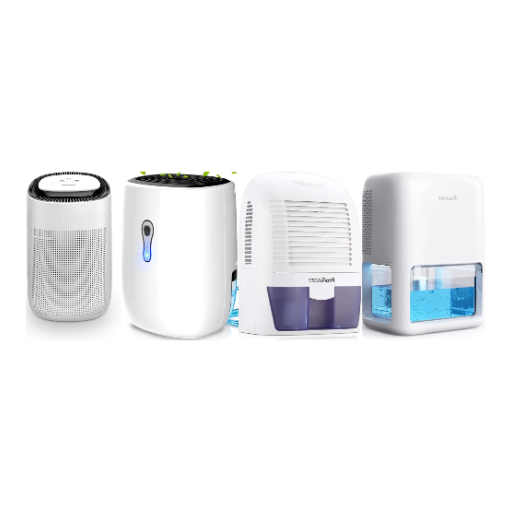
Overview of Features
Assessment of the Top-Rated Mini Dehumidifiers for the Bathroom Should Consider Several Important Features for Better Performance and Customer Satisfaction. First, Dominating in Design and Easy Fit in Bathroom Spaces that Are Usually Very Limited Would Ensure No Compromise Is Made on Efficiency. These Days, Most Mini Dehumidifiers Employ Thermoelectric Cooling Technology (Peltier) That Allows Them to Be Light and Whispering-Quiet Allowed to Be Just Exactly the Quietness Required in a Small Enclosed Area. Then There Is Capacity, Which Is Very Important to Consider about Effectiveness, With Choices Usually Ranging Between a Unit That Removes 8 Ounces and One That Removes 16 Ounces of Moisture, Depending on Room Size and Level of Humidity.
Energy efficiency should be considered, as most leading mini dehumidifiers are designed to draw very little power while running continuously. With the consideration of safety and convenience, the auto-shutoff design stops work as soon as the reservoir is filled, paired with clear tanks present to help with convenience in checking water levels. Many of them have a one-button control system for easy operation; others are low maintenance with removable filters preventing mold formation. Other options also have LED indicators or humidistat features that state the current operating status and target humidity level. On the contrary, offering clear information about moisture control is more accurate.
From an eco- and durability-focused perspective, refrigerants more benign to the environment and construction materials of increased durability are more commonly observed in design dictums. This, in turn, guarantees mini dehumidifiers work to deliver air quality improvement in high-moisture environments such as the bathroom while modernizing technological and environmental balance.
Price Range and Value
Mini dehumidifiers are available and sold in an extremely wide price range due to factors related to capacity, features, branding, and quality of design. Entry-level dehumidifiers typically range from $20 to $40, for offering basic measures of dehumidification in very confined small spaces. These Ergo cheaper options usually are portable and easy to operate, but such pricier ones may have advanced features such as humidity control adjustment, timer, etc. Mid-price mini dehumidifiers can fetch anywhere from $80 to $120 or more, with added functional attributes such as more energy efficiency settings, digital display, auto shut-off, and larger area coverage to boost convenience and performance.
When buying a mini dehumidifier, pricing needs to be connected to performance. As an example, mid-range Peltier Electric models, usually priced between $40 and $70, constitute a good balance for noise generation and sufficient moisture control in areas under 250 sq. ft. While this option might not present the cheapest buy when compared to its simpler desiccator counterparts, it turns out to be a very worthwhile investment because of operational efficiency and durability. Some units in this price range even come with extended warranties, which are a testament to the quality of construction, thereby being the best option for a customer looking for a practical and sturdy solution.
More costly mini dehumidifiers, which justify their high price, come integrated with features aligned with technological advances and environmentally conscious trends. For example, some of these models are certified to use energy-efficient refrigerants that comply with current environmental standards, thus cutting down on the carbon footprint to a considerable extent. Other exciting features include smart Wi-Fi connectivity that allows users to monitor and control the unit remotely via a smartphone app. Admittedly, these additions come with an increased upfront cost; however, promising long-term value propositions include energy savings, improved air quality, and extended operating life. In our conclusion, buyers should weigh their environmental conditions alongside which features are most important to them in selecting the most cost-effective yet efficient model that suits their needs.
In-Depth Reviews of the Best Small Dehumidifiers
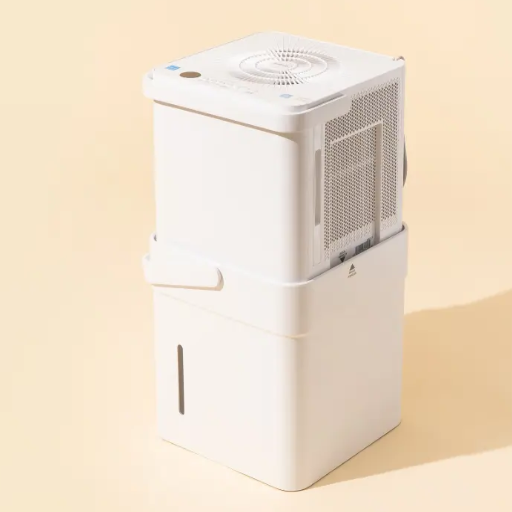
Pro Breeze Mini Dehumidifier
This mini dehumidifier is a compact yet powerful machine designed for an excellent environment in spaces measuring approximately 215 square feet. Using state-of-the-art Peltier technology, this unit is compressorless and very silent, making it very fit for a bedroom, an office, or other small living spaces. Removing up to 9 ounces (250ml) of moisture per day, ensures that the humidity is kept low enough to prevent any mold, mildew, or condensation-related problems.
That tank can hold 16 ounces (450ml) of water that could be taken out for easy emptying. An automatic shut-off protects against overflow by cutting power when the tank is full. The Pro Breeze Mini is prepared to save on energy, requiring less power to keep operational costs down even with constant use.
Recent indoor air quality statistics stress the importance of keeping allergen levels and relative humidity between 30% and 50% to avoid triggering respiratory problems. The capabilities provided by the Pro Breeze Mini fit in with this norm, thus helping to maintain a healthier indoor environment. Good in terms of price vs. performance, the Mini Breeze Dehumidifier is a viable choice for those looking for a compact yet efficient, convenient-to-use unit.
Eva-Dry Renewable Mini Dehumidifier
The Eva-Dry Renewable Mini Dehumidifier removes moisture from compact ambiance using innovative silica gel technology with no need for batteries or cords. This particular one is renewable and eco-friendly in nature and can store about 6 to 8 ounces of moisture before it needs regeneration. There is a clear indicator that tells users when it requires recharging as the desiccant material changes color from orange when it is not full to green at its full capacity.
The Eva-Dry Mini will work well anywhere on a small scale, such as closets, bathrooms, cupboards, or RVs, and can cover an area of about 333 cubic feet. Regenerating is simple: one has to plug in the mini dehumidifier for about 8-10 hours to let the desiccant expel moisture and regain its capacity for absorption. It is built to last up to 10 years in ideal conditions and is absolutely silent and very portable, allowing you to utilize it anywhere from the maintenance of sensitive areas to maintaining pristine humidity levels.
Since technology has advanced in recent years, this has made the Eva-Dry even more convenient. Independent tests confirm mold growth risk occurs almost always at indoor relative humidity higher than 60%, thus potential health issues related to allergens. The Eva-Dry Renewable Mini therefore comes in handy in ensuring such standards are kept in small spaces while meeting the sustainability criteria of present-day items.
Best Overall Mini Dehumidifier
The Eva-Dry Renewable Mini Dehumidifier is every time a prominent market leader within the small dehumidification category that balances efficiency with an eco-friendly solution. Manufactured with silica gel technology, it has no batteries or other electrical consumption during moisture absorption, thereby limiting performance costs. The unit can hold up to 6 ounces of moisture for about 333 cubic feet of space while serving closets, bathrooms, and RVs, among other small locations.
It outlasts the ten years when disposed of, which makes it a good choice from a sustainability perspective. The indicator window is an accurate yet easy-to-use window, which changes color from orange to green to signify saturation and that moisture renewal is required. It is best regenerated by simply plugging it into an electrical outlet for approximately 8-10 hours, at which time it is ready to be used almost immediately, working to reduce downtime to the very minimum.
Recent studies show that maintaining an indoor relative humidity between 40-60% helps control the spread of mold, mildew, and dust mites. It further works to improve air quality significantly, reducing the allergen-related symptoms for any respiratory-challenged individuals. The small and portable Eva-Dry Mini can find sufficient floor space in small spaces while playing an active role in indoor air quality management.
It has until now become technically reviewed and deserves users’ recommendations who cherish durability, energy conservation, and user-oriented designs as the best in its class.
Conclusion and Recommendations
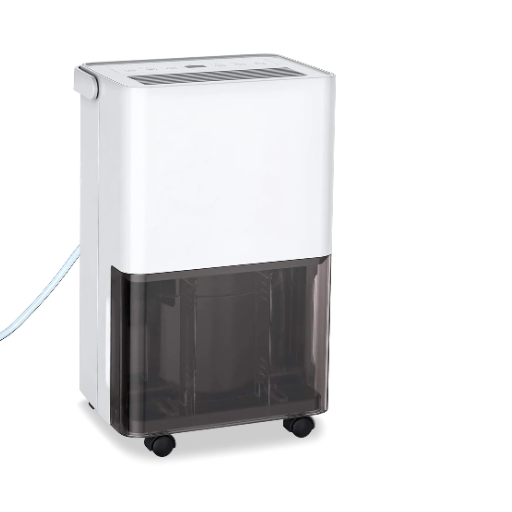
Tailored Recommendations for Different Needs
When discussing dehumidification, it is necessary to couple the capabilities of the products with the peculiar environmental and user requirements. These systems are mainly for small to mid-sized spaces and are considered portable dehumidifiers for carrying along. The units feature some qualities, generating very little noise while consuming less energy. The moisture-related concerns do need to be controlled in a small environment, but comfort should not be compromised.
High-capacity dehumidifiers are for huge spaces with high humidity levels and damp areas, with continuous drainage being preferred. Dehumidifiers fitting the description of those for such severe situations are equipped with the most advanced hygrometers and automatic systems for humidity control, so their proper functioning is guaranteed throughout long periods. They are of a strong build, thereby having a durability and reliability edge in conditions such as basements, industrial, or sites that involve tough humidity profiles.
These types of dehumidifiers are the best option for environmentally conscious consumers or those who want to save on energy. They use less energy but give the highest operational efficiency levels, thus reducing utility bills after some time. The models, integrating renewable-type desiccant technology, might offer a step further in green technology as it stands for a longer life of use.
In the case of highly specialized applications like storing very delicate things such as musical instruments, cameras, or moisture-sensitive documentation, these specialized compact dehumidifiers with very precise humidity settings would serve best. In other words, they ensure the control that would otherwise have degraded those materials and increase the life of the valuable stuff.
Having taken into consideration such factors as space size, humidity levels, energy consumption, and application cases, one will find himself/ herself attending to the final selection process for the type of dehumidifier that fits him/her. Provided they have such basic requirements and are coupled with insights into the prevailing market trends, it would indeed be a recipe for success for any individual or environment. Through the adoption of continuously evolving technology and product innovations, efficiency and environmental conservation can mutually exist until the end of time in this domain of indoor air quality management.
Budget-Friendly Options
While looking for budget dehumidifiers, there is an important consideration that should be weighed against their purchase price: operational efficiency and durability in use. Such considerations have resulted in many manufacturers introducing low-cost options. These options boast modern features such as digital humidity control, energy-efficient compressors, and auto-shutoff. The designs accommodate different room sizes and basically make them suitable for homes, offices, and other indoor environments.
Compact units generally target smaller spaces, priced usually below $100. Such a unit has enough capacity to remove moisture without high energy costs. Mid-sized dehumidifiers, costing anywhere between $150 and $300, tend to combine higher moisture extraction rates with technical features, including quieter operations and smart app integration. Some emblems within that price range are Energy Star-rated, suggesting very low energy consumption.
When comparing dehumidifiers from different manufacturers, their key differences rarely lie in their performance but rather in tank capacity, build quality, levels of noise, and maintenance requirements. Buyers should consider any additional costs for filter replacement, extended warranties, and energy use in the longer term. By looking at product reviews, energy performance ratings, and the ratio of initial purchase price to efficiency during use, consumers will sort out and select those models that represent the best return on investment without compromising on quality.
References
-
Small Dehumidifier For Bathroom – UC San Diego: Discusses the appropriate capacity and usage of compact dehumidifiers for bathrooms.
-
Home Moisture Problems – Oregon State University: Provides insights into ventilation and moisture control in bathrooms, which is relevant to dehumidifier usage.
-
Humidifier Usage – Virginia Tech: Offers general information on humidifiers and moisture management, which can be cross-referenced for dehumidifier-related content.
Frequently Asked Questions (FAQ)
Q: How does a mini dehumidifier help with mold prevention?
A: A mini dehumidifier can help prevent mold by reducing moisture in the air, creating an environment that is less conducive to mold growth. By maintaining indoor humidity levels between 30-50%, you significantly lower the risk of mold spores developing in your bathroom.
Q: What is the water tank capacity I should look for in a mini dehumidifier?
A: When choosing the right dehumidifier, consider the water tank capacity. A mini dehumidifier with a capacity of around 1000ml is suitable for bathrooms as it can collect enough moisture from the air without needing frequent emptying, making it practical for daily use.
Q: Can I use a mini dehumidifier continuously in my bathroom?
A: Yes, you can run a mini dehumidifier continuously in your bathroom. Many models are designed for constant operation, and they can efficiently remove excess moisture from the air, thus reducing the chances of condensation and mold formation.
Q: How does the size of the dehumidifier affect its performance?
A: The size of the dehumidifier directly impacts its performance. For smaller spaces like bathrooms, a mini dehumidifier is typically small enough to fit on a nightstand and is designed to effectively manage the specific humidity levels in that area, unlike larger dehumidifiers suited for larger rooms.
Q: What are the benefits of using a dehumidifier in the bathroom?
A: Using a dehumidifier in the bathroom has numerous benefits, including reducing humidity, preventing mold growth, and improving overall air quality. It helps eliminate excess moisture from the air, which can otherwise lead to damage to your home and promote the development of mold spores.
Q: Are there any noise concerns with mini dehumidifiers?
A: Most mini dehumidifiers designed for bathroom use operate at less than 30 decibels, making them quieter than many air conditioners and HVAC systems. This ensures that they can run unobtrusively in your bathroom without causing disturbance.
Q: How do refrigerant dehumidifiers compare to desiccant models?
A: Refrigerant dehumidifiers are typically more effective in large rooms, while smaller models known as desiccants are ideal for mini dehumidifier applications in bathrooms. Desiccant dehumidifiers work by absorbing moisture from the air, making them effective for maintaining a healthy indoor environment in smaller spaces.
Q: How much moisture can a mini dehumidifier collect?
A: The amount of moisture a mini dehumidifier can collect varies by model, but many can remove several pints of water per day, depending on humidity levels. Regularly checking the water collection tank is essential to prevent overflow and ensure optimal performance.

